

Nature doesn’t think in terms of “good soil, bad soil”. Each soil type simply welcomes a different set of plants. Chalky soil is known for having excellent drainage. It’s quite light, but rather poor and rocky. Discover plants that revel in alkaline soil and try a few tricks out to make the soil a bit more accommodating.
Read also:
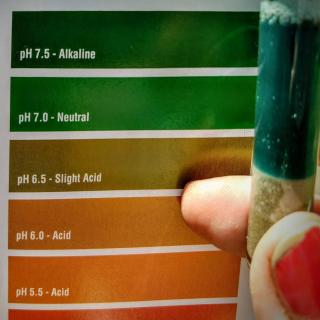 Soil pH is measured on a scale from 1 to 14. For values going from 1 to 7, soil is called “acidic”. Chemically speaking, it contains many hydrogen cations (H+). Around 7, we say the soil is “neutral”. Higher values between 7 and 14 mean the soil is basic. “Alkaline” and, when it’s linked to the type of bedrock, “chalky” are other words for this. Perhaps you don’t yet know the pH of your garden soil?
Soil pH is measured on a scale from 1 to 14. For values going from 1 to 7, soil is called “acidic”. Chemically speaking, it contains many hydrogen cations (H+). Around 7, we say the soil is “neutral”. Higher values between 7 and 14 mean the soil is basic. “Alkaline” and, when it’s linked to the type of bedrock, “chalky” are other words for this. Perhaps you don’t yet know the pH of your garden soil?
Abelia is definitely among the shrubs that thrive most in chalky ground. Often planted in rows to form a hedge, leaves will display a beautiful palette of colors depending the variety you chose. Some are mottled with pink or cream colors, others are green and still others unfurl deep purple leafage. On top of the leaves, a deliciously fragrant blooming will bathe the area from June to October. Some cultivars have pink flowers while others are white. Hardy down to 14-15°F (-10°C), this shrub likes light and well drained soil, even if it’s poor.
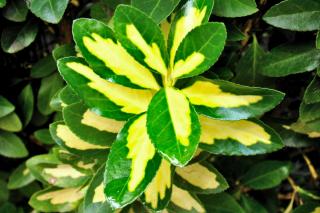 Euonymus japonicus, as the botanical name goes. A nice shrub that really fits the spot thanks to a dense bearing and evergreen, oval leaves. Tolerant to temperatures as low as 5°F or -15°C, it is just as happy in pots and garden boxes as it is in the ground. Container growth is a bit slower and thus easier to keep nice and trim. Spindles have very ornamental leafage! The ‘Aureus’ cultivar has green leaves with a golden yellow rim. A dwarf cultivar called ‘Happiness’ sends out shoots for which the topmost half is a brilliant yellow hue. Other varieties white instead of yellow, such as the ‘Pierrolino’ that has white specks all over each leaf, or the ‘Suzanne’ spindle that has an elegant white lining around the edges.
Euonymus japonicus, as the botanical name goes. A nice shrub that really fits the spot thanks to a dense bearing and evergreen, oval leaves. Tolerant to temperatures as low as 5°F or -15°C, it is just as happy in pots and garden boxes as it is in the ground. Container growth is a bit slower and thus easier to keep nice and trim. Spindles have very ornamental leafage! The ‘Aureus’ cultivar has green leaves with a golden yellow rim. A dwarf cultivar called ‘Happiness’ sends out shoots for which the topmost half is a brilliant yellow hue. Other varieties white instead of yellow, such as the ‘Pierrolino’ that has white specks all over each leaf, or the ‘Suzanne’ spindle that has an elegant white lining around the edges.
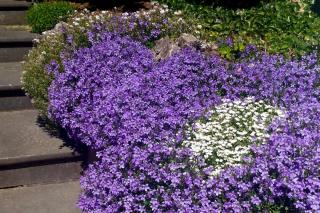 These three purple bloomers will definitely thrive in chalky soil beds! Aubrieta has evergreen leaves, and in Spring cute little purple flowers shove them around a bit to open their four lovely petals out. Bellflower stays low as well, and also pops cute purple flowers out that sometimes look like bells, at other times like trumpets.
These three purple bloomers will definitely thrive in chalky soil beds! Aubrieta has evergreen leaves, and in Spring cute little purple flowers shove them around a bit to open their four lovely petals out. Bellflower stays low as well, and also pops cute purple flowers out that sometimes look like bells, at other times like trumpets.
Ah, one cannot but mention lavender! Astounding floral panicles that both resemble and attract butterflies… and spread a heavenly scent throughout the garden! These three perennials love full sun and dry soil that quickly drains after a shower. It won’t matter in the least if it’s nutrient-poor and rocky. Feel free to fill a spots with sage and santolina. The silvery hue of their leaves is perfect to highlight the violet blooms as they appear. It won’t make caring for them any harder, since all these plants share the same needs.
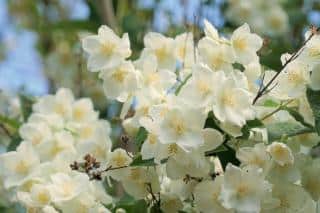 It’s true that most chalky soil plants love full sun and proper drainage. There are, however, alkaline-loving plants that thrive in the shade. An amazing example is the majestic Acanthus, a humongous perennial that pears towering white and purple flower fronds. Others that come to mind are the green-flowered Corsican hellebore, and the purple-leaved ‘Pinot noir’ heuchera. For shrub-level growing, count on hornbeam and common privet which you can form into perfect low hedges and edges. Slip a few fragrant, crumply-blooming mock-orange for white spots in June-July, and why not add a couple snowberry shrubs to get those pristine pearly berries from Fall to Winter.
It’s true that most chalky soil plants love full sun and proper drainage. There are, however, alkaline-loving plants that thrive in the shade. An amazing example is the majestic Acanthus, a humongous perennial that pears towering white and purple flower fronds. Others that come to mind are the green-flowered Corsican hellebore, and the purple-leaved ‘Pinot noir’ heuchera. For shrub-level growing, count on hornbeam and common privet which you can form into perfect low hedges and edges. Slip a few fragrant, crumply-blooming mock-orange for white spots in June-July, and why not add a couple snowberry shrubs to get those pristine pearly berries from Fall to Winter.
Is your dream garden lush with hydrangea, camellia and rhododendron? Heath plants that love acidic soil have caught your eye? You always have the option to grow them in pots. Most garden plants will grow perfectly well in containers. Some even have specific dwarf varieties perfectly suited for the purpose. It is nonetheless possible to make your soil more acidic. The key to doing this is to add organic matter such as compost, pine needles, leaf mulch and fermented weed tea. Additives that also help are sulfur or ferrous sulfate.
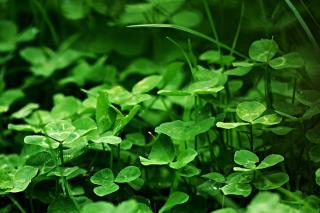 Best is to maximize the beautiful plants that naturally thrive on chalky soil. Any effort to acidify soil is short-lasting and requires constant efforts to maintain. Plants thrive most in settings and soil that are naturally suited to them. Simply put, it’s much more worth your time to just add organic matter and sow green manure. This will give you the leeway you need to grow a few more plants and you’ll still get excellent harvests in the vegetable patch. The soil won’t ever turn acidic, but you’ll end up with a chalky soil that’s rich and will retain lots of nutrients and water.
Best is to maximize the beautiful plants that naturally thrive on chalky soil. Any effort to acidify soil is short-lasting and requires constant efforts to maintain. Plants thrive most in settings and soil that are naturally suited to them. Simply put, it’s much more worth your time to just add organic matter and sow green manure. This will give you the leeway you need to grow a few more plants and you’ll still get excellent harvests in the vegetable patch. The soil won’t ever turn acidic, but you’ll end up with a chalky soil that’s rich and will retain lots of nutrients and water.